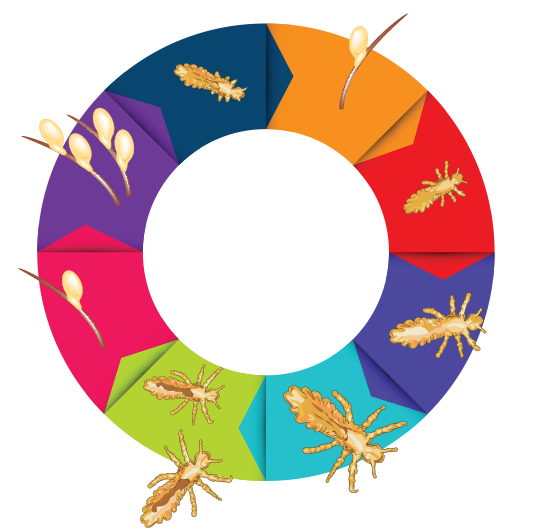HEAD LICE.
THE FACTS.
What are head lice?
Head lice are small wingless insects, which live and breed in the human hair and feed on blood sucked from the scalp. They are a whitish brown to reddish brown colour and have six legs. Head lice eggs are usually about the size of a pinhead and are an oval shape. Not all people will have an itchy head from a lice infestation. The itchiness, which some people experience, is their body reacting to the saliva from the lice when they bite. The itchiness may not disappear straight after the treatment, the presence of itchiness alone is not a reason to repeat treatment.
A female louse lays three to eight eggs per day and these eggs are firmly attached to a person’s hair fibres. The eggs are normally within 1.5cm of the scalp as they rely on the warmth from our heads to hatch and can live on the scalp for up to 35 days. Because head lice can only crawl, transmission of lice from person-to-person requires direct contact head-to-head. They cannot survive for more than 2 days without a human host. They can sometimes be spread by contact of items recently used by someone with head lice such as combs, brushes, hats and pillowcases, which is why it is important to wash these items with detergent and very hot water.
Whilst head lice don’t discriminate against which head they are choosing to feed upon, they are most common amongst children and their immediate family members due to them more likely being spread through head-to-head contact. It is important to check all family members for infestation.
It is difficult to remove all eggs with the initial lice treatment. Therefore, it is recommended that a person be treated with two applications, 7-10 days apart, ensuring any remaining lice that may have hatched new eggs are killed and to break the head lice cycle.
The Louse Life Cycle
